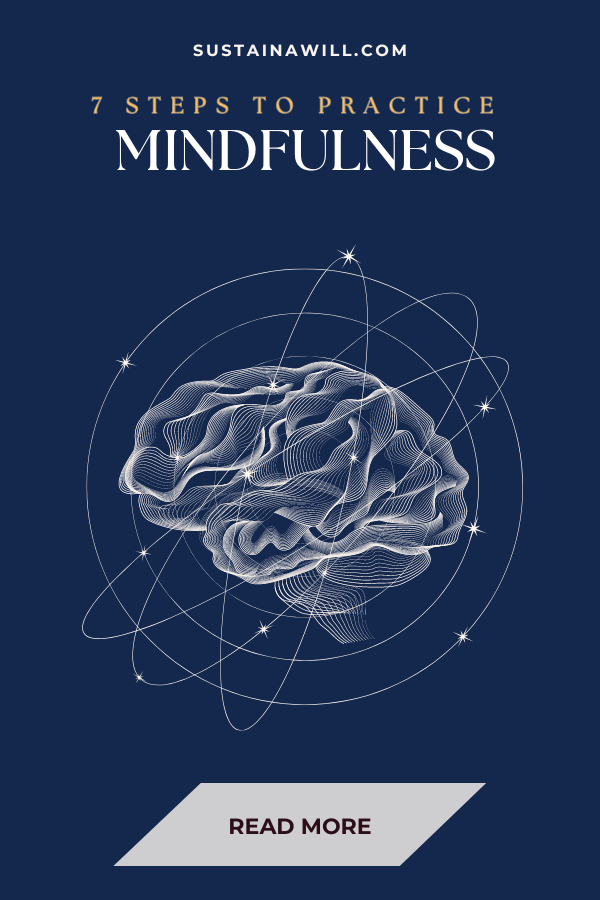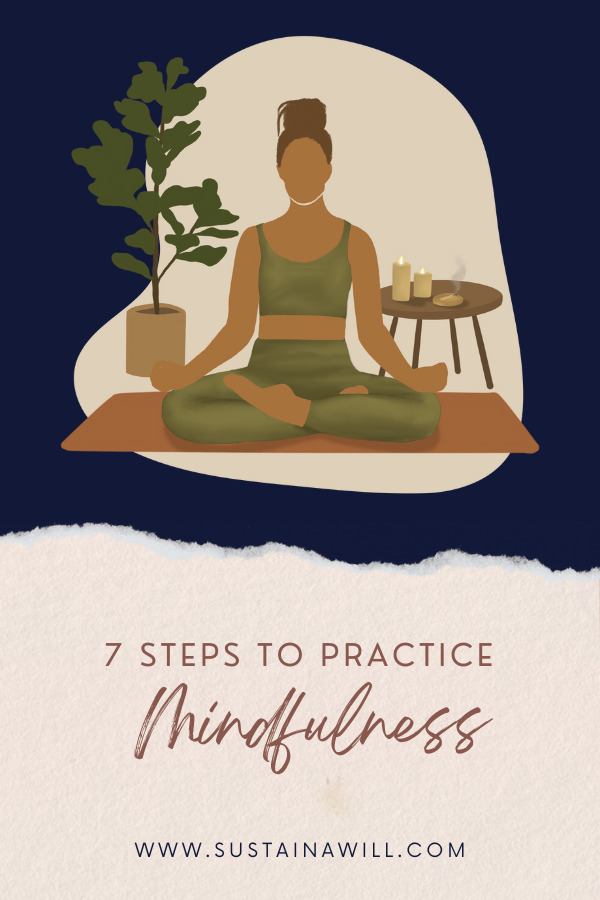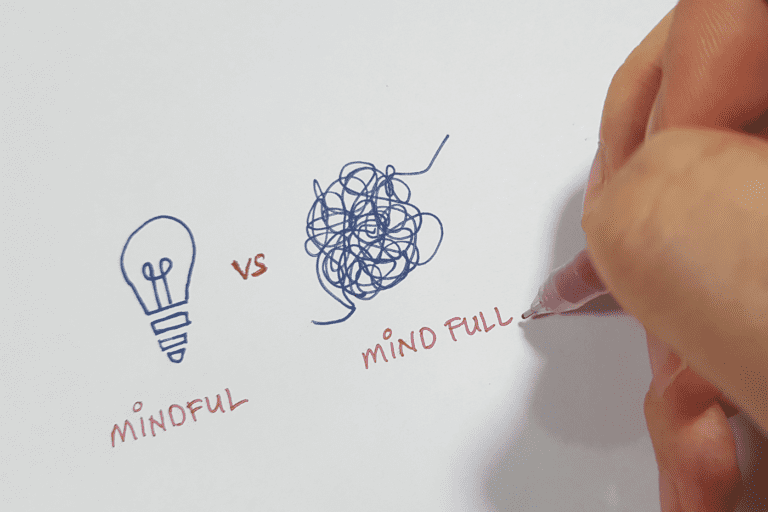Mindfulness is everywhere – people talking about it here, mindfulness exercises there. So, it’s near impossible that you’ve never heard the word tossed around. But, what is mindfulness exactly?
Join me in exploring what exactly mindfulness is, and how it can help you relax, stay focused, and boost your overall happiness.
What is mindfulness?

Mindfulness is the practice of being fully present and engaged in the current moment without letting distractions steal your focus.
It involves paying attention to your thoughts and feelings without judgment, allowing for a heightened sense of awareness.
Is mindfulness a skill? Can you learn it?
Yes and yes! Mindfulness is indeed a skill, and the good news is that it’s something anyone can learn.
Think of it as a mental muscle you can strengthen. With a bit of practice and the right techniques (like meditation, deep breathing, and mindful observation), you’ll be navigating your thoughts like a mindfulness pro.
How do I know if I am mindful?
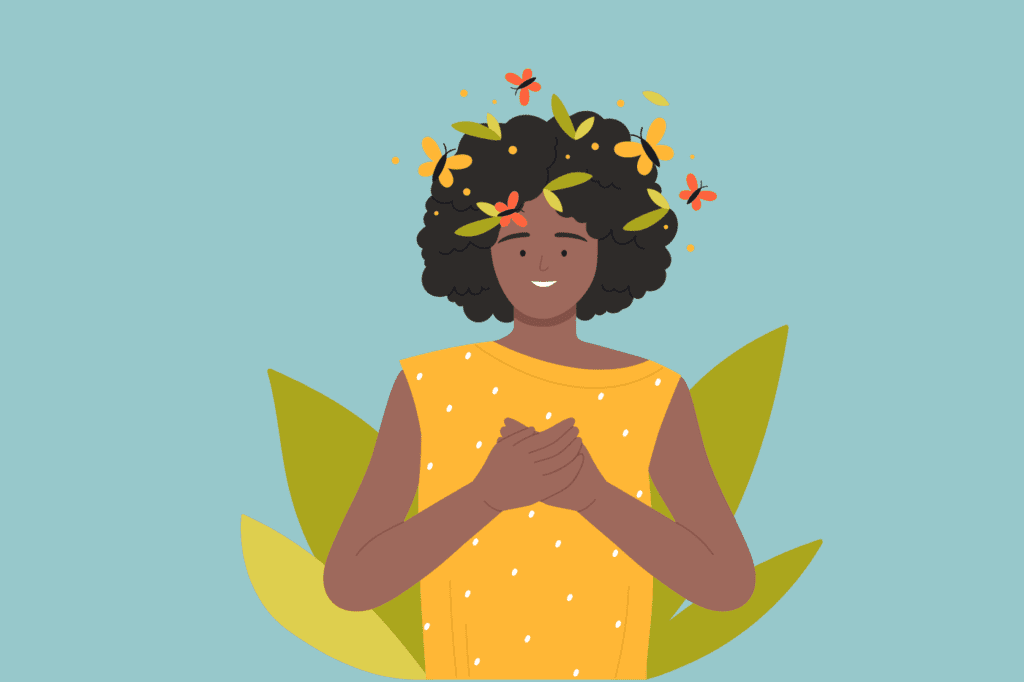
Here’s a handy checklist to help you determine if you’re practicing mindfulness:
1. Present Awareness: Are you fully immersed in the current moment, appreciating the details around you?
2. Thought Observation: Can you observe your thoughts without judgment, allowing them to come and go like clouds in the sky?
3. Sensory Engagement: Are you attuned to your senses, fully experiencing the sights, sounds, and sensations of your surroundings?
4. Emotional Awareness: Can you identify your emotions without being overwhelmed by them, understanding their presence in the moment?
5. Focus and Concentration: Are you able to concentrate on one task at a time, giving it your full attention without constant mental distractions?
6. Mind-Body Connection: Do you notice how your body reacts to different thoughts and emotions, fostering a connection between your mind and body?
7. Non-Judgmental Perspective: Are you observing situations without immediately labeling them as good or bad, right or wrong?
If you find yourself ticking off these points, congratulations! You’re likely cultivating mindfulness in your daily life. If not, don’t worry—mindfulness is a skill that develops with practice.
What are the benefits of mindfulness?
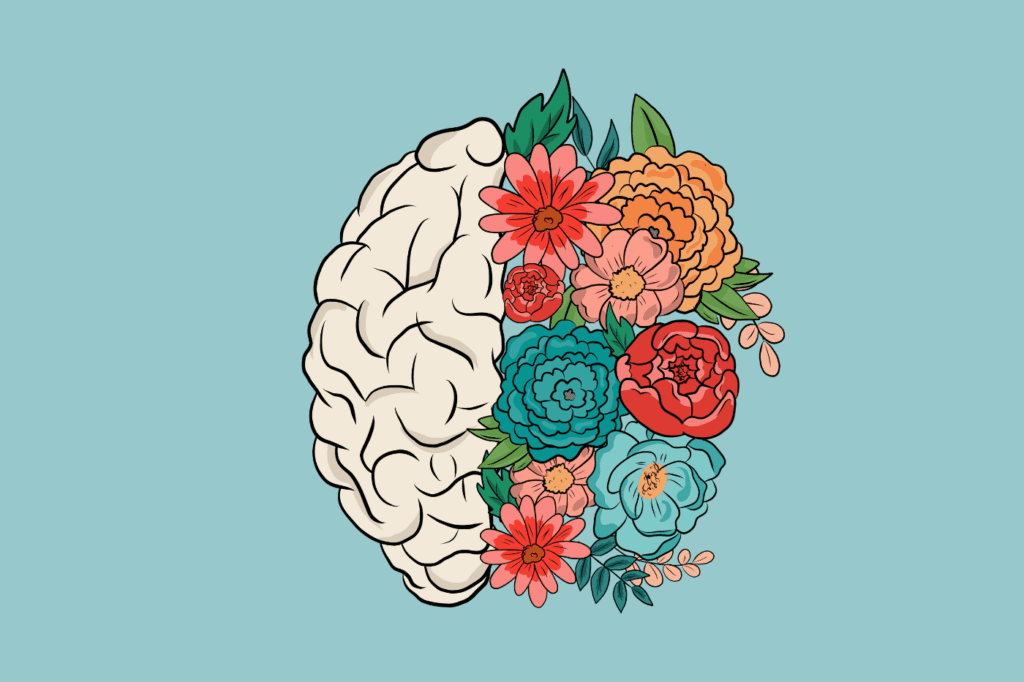
The benefits of mindfulness are numerous:
- Stress Reduction: Mindfulness helps in lowering stress levels by promoting a calm and centered state of mind.
- Enhanced Focus and Concentration: Regular practice contributes to improved focus and concentration on daily tasks.
- Improved Emotional Regulation: Mindfulness allows for a better understanding and regulation of emotions, fostering emotional well-being.
- Overall Well-Being: Embracing mindfulness as a routine is associated with better mental and emotional health.
Regular practice is associated with better mental and emotional health. So, taking a few moments each day to practice mindfulness can have a positive impact on your life.
How do I practice mindfulness? (7 Steps)
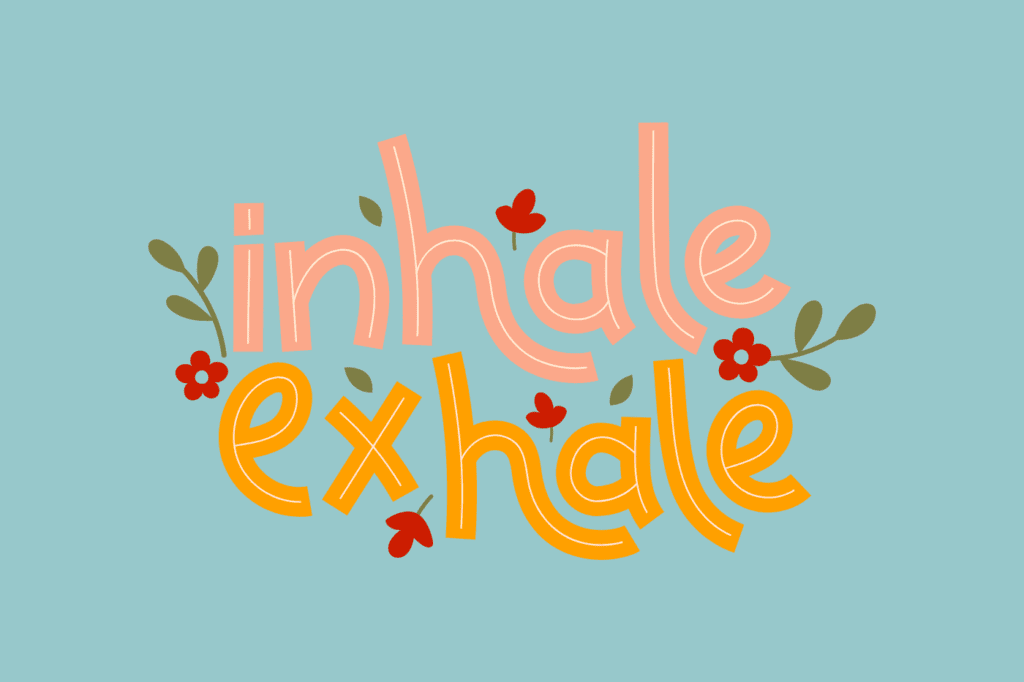
Here is a 7 step process to practice a basic mindfulness meditation:
1. Find a Quiet Space
Choosing the right environment is crucial for mindfulness. Select a quiet space where you won’t be disturbed, allowing you to focus on the practice without external distractions.
2. Focus on Your Breath
Close your eyes and bring your attention to your breath. Inhale and exhale naturally, directing your focus solely on the rhythmic flow of your breath. This helps anchor your awareness in the present moment.
3. Observe Sensations
While maintaining your focus on the breath, turn your attention inward. Notice any sensations in your body—whether it’s tension, warmth, or coolness. Observe these feelings without passing judgment.
4. Acknowledge Thoughts
As thoughts naturally arise, acknowledge them without becoming entangled. Imagine your thoughts as passing clouds. Allow them to come and go without attachment or judgment, maintaining a sense of detachment.
5. Ground Yourself in the Present
Feel the connection between your body and the surface it rests upon. Whether sitting or lying down, this step helps anchor you in the present, fostering a sense of stability and connection.
6. Engage Your Senses
Expand your awareness to the environment around you. Notice the sounds, smells, and sensations in your surroundings. Engaging your senses fully in the present moment enhances your mindfulness experience.
7. Practice Regularly
Mindfulness is a skill that develops with consistent practice. Start with short sessions and gradually extend the duration as you become more comfortable. Regular practice will cultivate mindfulness as a natural aspect of your daily routine.
For additional mindfulness exercises and guidance, check out these Mindfulness Exercises for Daily Life or check out this video about mindfulness.
Affirming positive statements, for example, is a powerful mindfulness exercise. If you’re looking to enhance your daily routine with impactful affirmations, check out our post filled with powerful affirmations.
Takeaway
The peace, focus, and joy that mindfulness brings are within your reach. Don’t let the hectic pace of life steal your calm. Take a moment each day to reconnect with the present.
Try the 7 steps and see the difference for yourself. Your future self will thank you.
